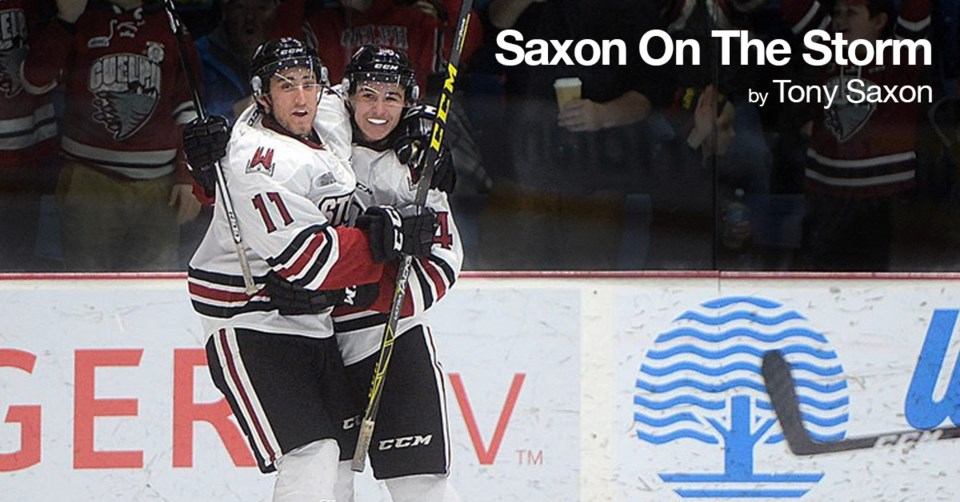The Guelph Storm brought a whole new meaning to the term “all in” the past week.
Two monster deals that landed a trio of world junior team members, and others, capped off a head spinning number of player moves by the team this season as it goes for a championship.
Since the end of last year the Storm has acquired 10 players and 11 draft picks. They have traded away eight players and 26 draft picks.
League wide a total of 100 players have changed teams since the the start of the regular season.
The trade deadline always comes with a grimace.
There is a legitimate avenue for criticism of this annual event, of the delivery of young players and draft picks from contending teams in exchange for more talented and older players from non-contending teams.
Even the Storm situation leaves one with a tinge of emptiness that comes with having acquired a contender rather than developing one.
But as the saying goes, don’t hate the player, hate the game. Guelph didn’t create the cyclical nature of junior hockey. It’s inherent in what junior hockey is, right or wrong.
And let’s dispel the notion that every young player traded during the OHL wheeling and dealing frenzy known as the trade deadline ends up being miserable, disoriented and feeling used when they have to uproot during the school year.
While I don’t doubt some do, it certainly isn’t the brush we should paint all deals with. To assume that every teenager traded is upset by it would be just wrong.
Many of those traded are no longer in high school.
Many of them welcome a fresh start and more ice time.
Many of them are moving to better situations, closer to home/family/friends rather than further away.
For those that are, the players, their parents and agents are well aware of the realities of junior hockey. These trades don’t come as a shock.
You chose junior hockey. You chose to enter a league where you might have to go live and play in another city.
It is also a reality that many, if not the majority, of OHL players have no-trade clauses in their deals with teams. They often didn’t have to go.
But for many it is an opportunity. They are happy to go.
If you are 16 or 17 young player living the dream of trying to make it to the National Hockey League, do you want to spend your draft year on a stacked team, hardly playing, hardly getting scouted, or do you want to go somewhere where you are going to get lots of ice time? Maybe some power play time?
In 2013-2014 rookie Garrett McFadden sat out over 20 games during the regular season. He didn’t dress for a single one of the team’s 24 game post-season run to the Memorial Cup final.
Was that beneficial to Garrett McFadden’s development? Was that enjoyable? Or were there times he wished he was on a different team?
Many young players want to be traded, for a variety of reasons.
Mason Primeau and Tag Bertuzzi were not devastated when they were traded from the Guelph Storm. They were thrilled to move to situations that were better for their careers and for them personally.
I’m not saying the system is perfect, that somehow it needs to be more controlled and restrained. But it also isn’t broken.
